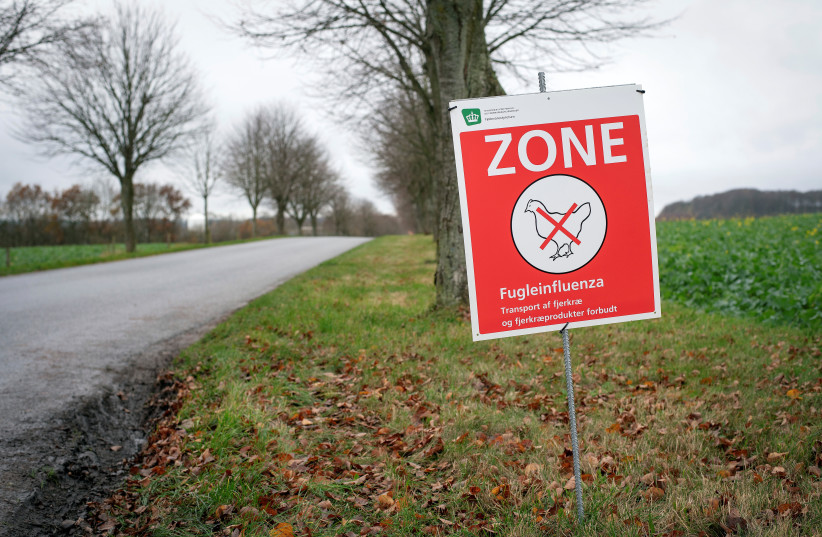Eurasian H5 Highly Pathogenic Avian Influenza (HPAI) poses a low risk to public health, the US Centers for Disease Control (CDC) said on Friday, as cases of the virus were reported in birds in at least 13 states.
Where were bird flu outbreaks found?
Outbreaks were found in domesticated flocks in Maryland, Missouri, Indiana, Connecticut and Iowa last week, as the virus continued to spread across North America, according to the United States Department of Agriculture’s Animal and Plant Health Inspection Service (APHIS).
A flock of commercial layer chickens in Cecil County, Maryland, a flock of commercial broiler chickens in Stoddard County, Missouri, a commercial flock of turkeys in Dubois County, Indiana, and two non-commercial backyard flocks in Connecticut and Iowa were found to be infected with HPAI.
The first confirmed case of Highly Pathogenic Avian Influenza (HPAI) in a US commercial flock since 2020 was detected in a turkey flock in Indiana earlier this month. The flock was infected with the H5N1 subtype, the same strain detected in mid-January in wild birds in North Carolina when the first cases of HPAI this season were detected in the US.
As of Saturday, over 300 wild birds in South and North Carolina, Virginia, Maryland, Georgia, Connecticut, New Hampshire, Delaware, Alabama, Kentucky, Maine, New Jersey, Florida, Massachusetts and Tennessee had been found to be infected with Eurasian H5 HPAI, with a number of cases specified as H5N1.

While the risk to the general public's health is considered low, some people who have job-related or recreational exposure to birds may have a higher risk of infection. The CDC stated that it "is watching this situation closely and taking routine preparedness and prevention measures in case this virus changes to pose a greater human health risk."
A Northern Europe "export"
A preprint study by scientists from the USDA which has not yet been peer-reviewed found evidence that the latest outbreak of bird flu in North America was transmitted from Northern Europe over the Atlantic Ocean, the first documented introduction of a Eurasian HPAI via the Atlantic Flyway to the US.
The study also found that while HPAI in wild birds was usually tied to spillover from domestic birds, it seems that such viruses are now being maintained in wild bird populations as well, with researchers adding that this highlights the importance of monitoring wild birds.
The CDC noted that while the H5N1 viruses detected in late 2021 and 2022 are different from earlier H5N1 viruses, they still lack changes seen in the past that have been associated with viruses spreading more easily among poultry, infecting people more easily and causing severe illness in people.
There is little information available concerning the spectrum of illness that could result from human infections with the newest H5N1 viruses, as only one such human infection has been reported. The patient, a man who raised ducks in the UK, did not have any symptoms.
The CDC added that an H6 candidate vaccine virus produced by the CDC could be used to produce a vaccine for the current H5N1 virus, if necessary, and that the current virus can be detected by existing diagnostic tools and treated with existing antiviral medications.
A large number of bird flu outbreaks have been reported throughout Europe, Africa and Asia in recent weeks and months, mostly due to the H5N1 subtype, which comes from the H5 lineage, according to the World Organization for Animal Health (OIE). The organization warned that a further increase in outbreaks is expected in the coming months.
According to a recent update by the Food and Agriculture Organization of the United Nations (FAO), at least 930 outbreaks of HPAI have been detected in animals since January 26, 2022. 10 new cases in humans were reported in China, as well.
A study in late January by the Pirbright Institute and the UK Animal and Plant Health Agency found that the H9N2 and H7N9 strains of avian influenza could share genetic information to create an H9N9 strain that could cause more severe disease in poultry and potentially cause disease in humans as well. The H9N9 strain can infect and be transmitted between ferrets and has a higher replication rate in human cells.
The study, published in the peer-reviewed Journal of Virology, showed that strains already circulating in poultry populations can exchange genetic material and create new strains which can pose a greater risk to poultry and humans.
"This is the first study to show that infection with circulating H9N2 and H7N9 influenza viruses could create new virus strains such as H9N9 that cause more disease in poultry and pose a greater risk to human health," said Professor Munir Iqbal, head of the Avian Influenza Group at Pirbright. "More research is needed to determine which avian flu viruses could combine and pose a threat to poultry and human health."
